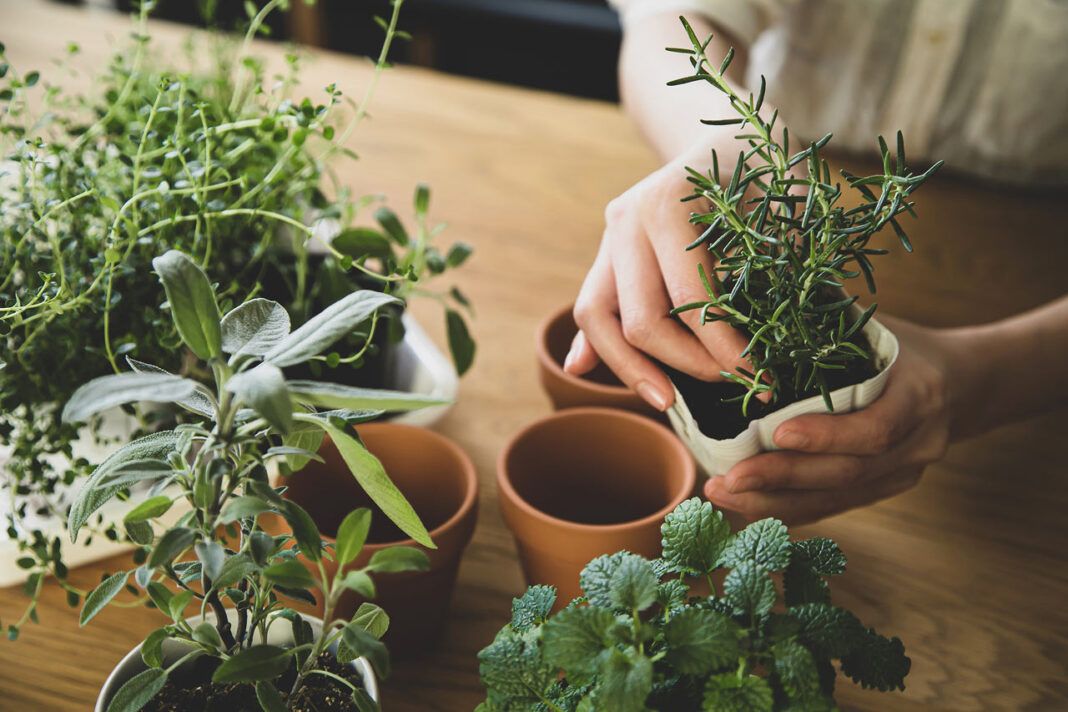Herbs like cilantro, basil, and mint are used in several recipes to enhance flavor. While these herbs are easily available across the country, buying them from a grocery store can be expensive, especially the varieties from organic brands. That’s why many people prefer growing their own herbs. Beginners wanting to follow this approach must select the right herbs to grow at home and use them correctly to enhance flavor in cooking.
Popular fresh herbs to grow for cooking
The best herbs for cooking are ideally the ones that are grown at home, right on the kitchen windowsill. Homegrown herbs enhance the flavor of foods and do not have preservatives, unlike many store-bought options. Some popular herbs to grow at home include cilantro, basil, rosemary, thyme, chives, and mint.
Cilantro
The fresh leaves of cilantro (including the stem) can be used in cooking. The herb goes well with southwestern or Mexican dishes, especially salsas. To grow cilantro indoors, remember to keep the soil constantly moist.
Basil
People planning on using herbs to enhance flavor in cooking can also grow basil. For proper growth, the basil plant must be kept away from cool drafts, such as indoor vents. Basil leaves go well with pizza, pasta, salads, and pesto. Alternatively, they can be layered atop sliced tomatoes with mozzarella and a little salt and pepper.
Rosemary
This aromatic plant is typically grown outdoors because of its size. Rosemary is ideal for recipes that have meat. Chipping it up with garlic and smearing it with Dijon mustard is a great way to enjoy rosemary. It can also taste great when mixed into sauces or breads.
Dill
This herb grows quickly from the seed, so a larger container must be used for plating. Dill is used in various cuisines, including Asian, European, and Middle Eastern.
Thyme
The Mediterranean summer-seasonal herb is easy to grow indoors so long as it receives ample sunlight and adequately-drained soil. Thyme can be used when making sauces and rubs. It doesn’t need to be chopped because the leaves are already small.
Chives
Chives give the house a beautiful green hue. They sprout and flourish rather quickly from seeds. The leaves of chives are where the flavor comes from, especially when picked fresh. Beginners can use this fresh herb in food recipes or as a garnish.
Mint
While mint requires constant moisture to thrive, it is still an easy-to-grow indoor herb. It can be cultivated from a cutting or plant. In addition to exercising moisture control, one must balance the sunlight exposure. The herb can be paired with several recipes, like lamb, grilled veggies, and even soups and cocktails.
Tips to grow and maintain fresh herbs
Growing herbs requires patience; one must ensure the plants get the right amount of sunlight, water, and soil to grow.
Plant herbs in separate containers
Since every herb requires a different soil composition, they usually cannot be grown in the same container. Some types, like mint and coriander, require separate containers to stop them from invading other herbs.
Space out the herbs
Even if certain herbs have the same requirements and can be grown in the same container, they must be planted a few inches away from each other. Placing them too close could inhibit their growth and increase competition between them.
Never overwater
A good rule of thumb for watering the herbs is first to check the soil’s dampness. If the soil feels damp within the first inch of soil, one must wait for a few days before watering again. A thirsty plant can be watered again, but overwatering could increase the chance of the herb getting waterlogged and perishing.
How to use fresh herbs in cooking
Growing the right herbs is not enough; one must also know how to incorporate fresh herbs into meals. Learning how to cook with fresh herbs is a skill one will develop over time. Beginners, however, can use a few tips to get off on the right foot.
Use herbs sparingly
The aromatic oils in herbs are strong, so adding too much to foods can be overwhelming for other ingredients. One must always use herbs sparingly after measuring them.
Blend with unsalted butter
Heating unsalted butter with herbs is a great way to enhance their flavor. Butter or other cooking oils help draw out the aromatic oils of herbs.
Chop the leaves fine
When chopped fine, the leaves blend properly with the food. Grinding the leaves in a mortar may be necessary for some recipes. The more the herb’s surface is cut, the better the aromatic oil can be absorbed.
Ways to store fresh herbs for cooking
Storing the herbs is necessary once plucked. One must first wash and dry them thoroughly and trim off an inch of the stem. They must then be wrapped or rolled in damp paper towels and transferred in a Ziploc bag before refrigeration. The herbs will last longer (sometimes up to three weeks) when kept in a refrigerator.
